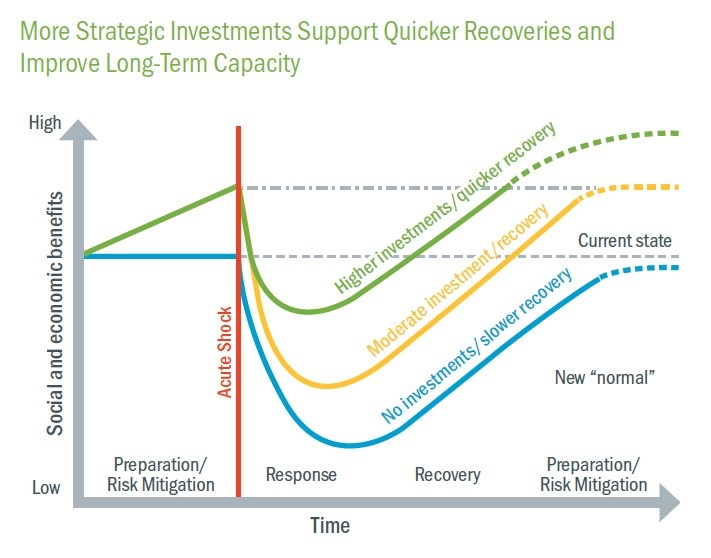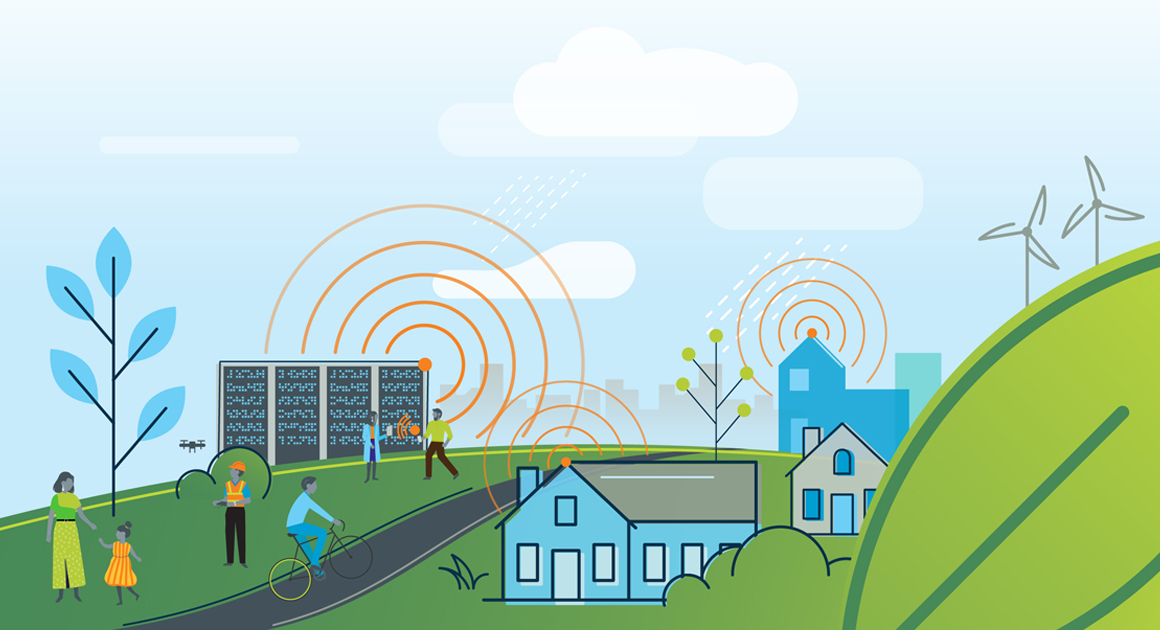Climate change presents significant operational, financial, and reputational risks to the data center industry. Developing strategies and prioritizing investments to minimize these risks are key to preparing data center owners for the effects of climate change and the adaptations required to thrive. Risks include direct risks at the facility scale, indirect risks from the vulnerabilities of water and power infrastructure, and tangential risks with the potential to impact at the regional scale. According to the National Institute of Building Sciences 2017 Interim Report, every $1 invested in risk mitigation has the potential to save up to $6 in recovery. Proactive, prioritized investments will pay dividends to companies who have prepared and planned for impacts to their water supplies.
Climate change presents significant challenges to our clients and communities. Understanding the impacts of climate risk and developing adaptive strategies will help to prioritize investments for a climate resilient future.
Dr. Tess Sprague, Climate Risk and Resiliency Expert
There is not a one-size-fits-all approach to resilience planning and actions. The scope and scale of this journey can range from small, conceptual studies aimed at identifying critical risks, to large, complex modeling efforts and detailed design of adaptive strategies and mitigation actions. Brown and Caldwell (BC) considers the cascading effects of climate change—how changes in one part of a system can impact changes in another part of a system. This holistic approach helps to reduce vulnerabilities and better understand expected and unexpected climate change impacts for individual facilities and across multiple systems.
BC’s approach is driven by the need to maintain flexibility and encourage adaptive management strategies to quickly respond to changes and adjust to an ever-growing body of information. This includes prioritizing no-regret or low-regret opportunities, communicating system interconnectivities and interdependencies, and pursuing multi-benefit and nature-based solutions.
Phases of Resilience
BC has been assisting data center owners in all phases of resilience planning: (1) preparation (readiness for shocks or stresses), (2) risk mitigation (actions to limit or lessen impacts), (3) response (actions immediately during or after an event), and (4) recovery (restore, improve, and “build back better”). All four phases provide opportunity to build resilience and enhance capacity to adapt to changing acute and chronic conditions. Systems that have invested in resilience prior to shocks and stressors, and engage in meaningful actions during the response period, benefit from quicker recovery periods and even greater gain compared to the pre-shock, pre-stressor current state baseline.

The quality and quantity of water available for use by people and ecosystems across the country are being affected by climate change, increasing risks and costs to agriculture, energy production, industry, recreation, and the environment.
Summary Findings, US Fourth National Climate Assessment, 2018
Real World Application
BC evaluated cooling water infrastructure alternatives for a leading technology company at five large data center and cloud computing campuses across the United States. The results of BC’s condition assessments and vulnerability analyses empowered the client to identify, understand, and mitigate risks associated with water supply infrastructure, supply source, and wastewater discharge to their data center operations. The outcome of this evaluation was used to prioritize investments for resiliency and risk mitigation.

 Dr. Tess Sprague is Brown and Caldwell’s Climate Risk and Resiliency Expert. She leads BC’s national strategies for integrating resilience planning into our projects. She has over nine years of experience and specializes in water resource planning, climate change, and resilience with an emphasis in policy and stakeholder outreach and communication. Dr. Sprague is a teacher, researcher and author on resilience and planning topics. In her latest publication “
Dr. Tess Sprague is Brown and Caldwell’s Climate Risk and Resiliency Expert. She leads BC’s national strategies for integrating resilience planning into our projects. She has over nine years of experience and specializes in water resource planning, climate change, and resilience with an emphasis in policy and stakeholder outreach and communication. Dr. Sprague is a teacher, researcher and author on resilience and planning topics. In her latest publication “